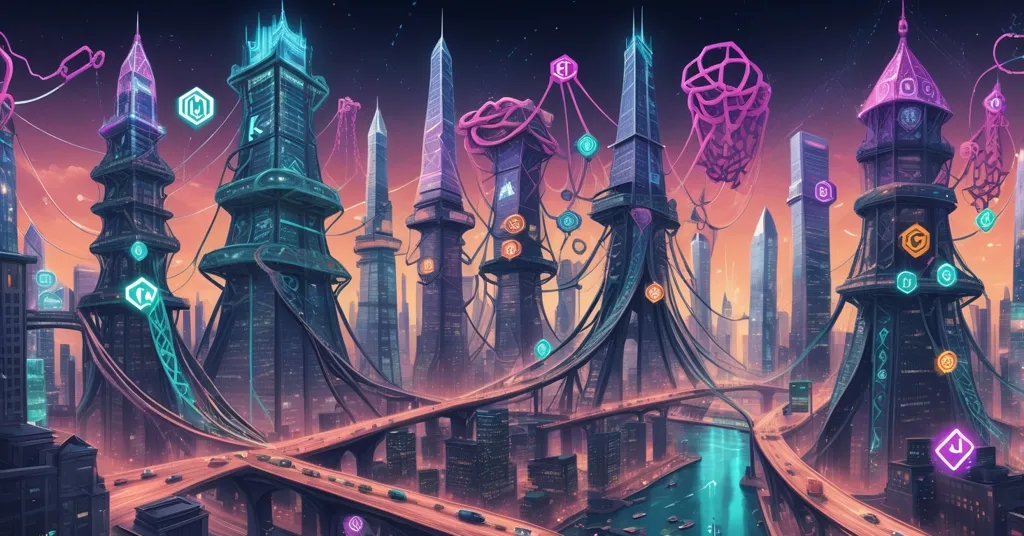Uniswap and Kraken Lead Shift to Appchains for Scalability and Efficiency

The Great Appchain Migration: Uniswap’s Shift to Custom Infrastructure is Part of a Larger Trend
The blockchain industry is witnessing a significant shift as major players like Uniswap and Kraken move from general-purpose blockchains to custom-built appchains. This trend is driven by the need for more tailored and efficient infrastructure, promising improvements in scalability, cost efficiency, and tokenomics design.
- Uniswap launches UniChain, a custom L2 solution
- Kraken plans to build an Ethereum L2 Superchain
- Appchains offer scalability and cost efficiency
- Interoperability solutions address ecosystem fragmentation
Uniswap, a pioneering decentralized exchange, has launched UniChain, a custom Layer 2 (L2) solution designed to enhance DeFi and Ethereum scaling. UniChain aims to slash transaction costs by about 95% compared to Ethereum L1, with one-second block times and 250ms sub-blocks for near-instant transactions. This shift from general-purpose blockchains like Ethereum and Solana to custom infrastructure reflects the need for solutions that cater to the unique demands of large-scale projects.
Meanwhile, Kraken, a leading cryptocurrency exchange, is developing an Ethereum L2 Superchain called Ink. Ink is designed to make crypto more accessible and frictionless, facilitating seamless transactions across its ecosystem with the SuperchainERC20 token. With over 100,000 members in its developer community and millions of transactions on its testnet, Ink demonstrates the growing interest in custom infrastructure.
General-purpose blockchains like Ethereum, Solana, and Base have been foundational for the early web3 ecosystem, but they come with limitations. High transaction fees and rigid tokenomics can hinder the growth of large-scale projects. Appchains, on the other hand, are specialized blockchains designed for specific applications, allowing for better performance and customization. They enable projects to fine-tune performance, integrate custom features, and scale without external constraints, potentially eliminating transaction fees.
The potential for ecosystem fragmentation has been a concern with the rise of appchains. However, interoperability solutions like LayerZero and Avalanche L1s (formerly known as subnets) have addressed these issues. These technologies ensure seamless connectivity between appchains and broader blockchain ecosystems, allowing for a more integrated network.
Steven Gates, founder of GoGoPool, a decentralized staking protocol on Avalanche, underscores the inevitability of this trend:
Uniswap’s recent launch of UniChain, a custom L2 designed for optimized functionality, is a clear example of this shift.
He adds:
By designing their own appchain infrastructure, projects can optimize for performance, reduce costs, and align more effectively with their specific needs.
While the shift to appchains is seen as inevitable, it’s not without its challenges. The development and maintenance of custom appchains require significant technical expertise and resources. Moreover, there’s a risk of centralization if a few dominant appchains emerge, potentially undermining the decentralized ethos of blockchain technology.
Despite these challenges, the advantages of appchains are compelling. They offer the scalability and efficiency needed to drive the future of decentralized finance and beyond. As projects grow, the benefits of custom appchains become too significant to ignore, enabling them to design tokenomic models that foster community loyalty and sustainable growth.
Web3 builders are urged to future-proof their projects by investing in custom appchain infrastructure. This move can position them as leaders in the next era of blockchain innovation. The shift towards custom infrastructure is not just about addressing current problems but about laying the groundwork for the future of decentralized technologies.
Key Takeaways and Questions
- What is driving the shift from general-purpose blockchains to appchains?
The shift is driven by the need for more tailored and efficient infrastructure that can better meet the specific needs of large-scale projects, offering advantages in scalability, cost efficiency, and custom tokenomics.
- How do appchains address the limitations of general-purpose blockchains?
Appchains provide a dedicated environment where projects can fine-tune performance, integrate custom features, and scale without external bottlenecks, while also allowing for better cost control and custom tokenomic models.
- What are the concerns about ecosystem fragmentation, and how have they been addressed?
Concerns about ecosystem fragmentation have been addressed by advancements in interoperability solutions like LayerZero and Avalanche’s L1s, which enable seamless connectivity between appchains and broader blockchain ecosystems.
- Why is the migration to appchains considered an inevitability?
The migration is considered an inevitability because as projects grow, the benefits of custom appchains become too compelling to ignore, offering scalability, efficiency, and alignment that general-purpose blockchains cannot match.
- What should web3 builders do to future-proof their projects?
Web3 builders should invest in custom appchain infrastructure to future-proof their tech stack and position themselves as leaders in the next era of blockchain innovation.



